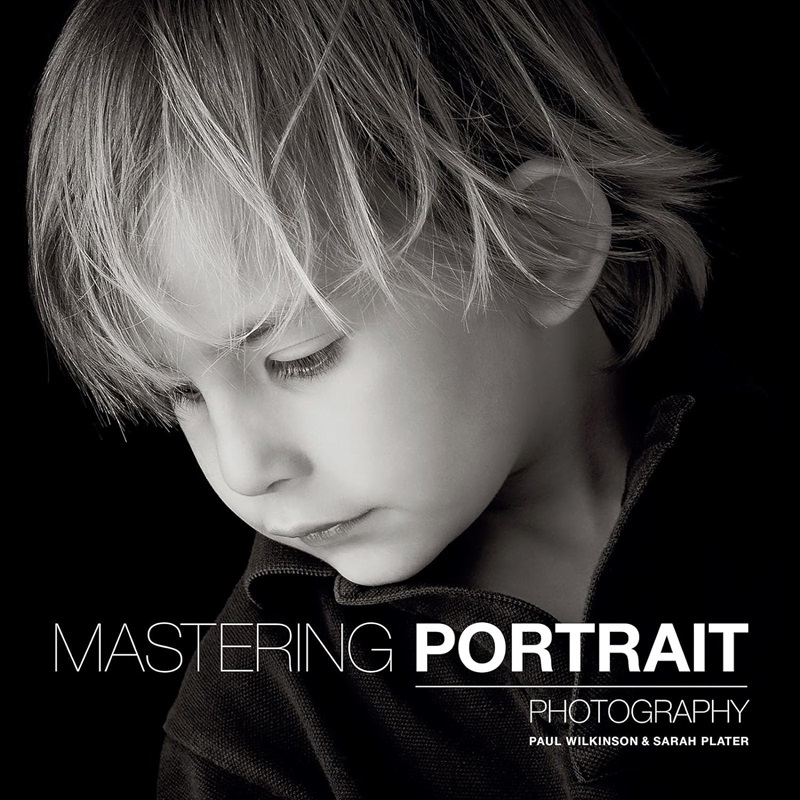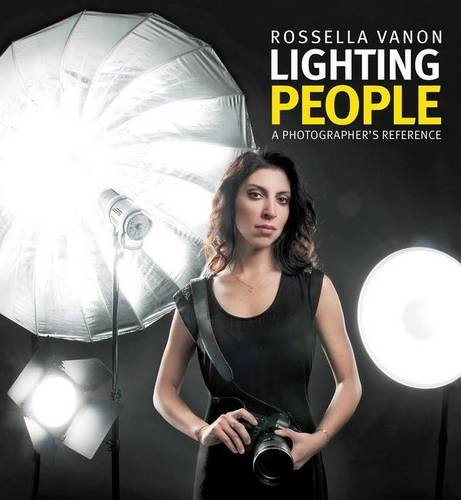Have you ever wanted to convey your emotions and mood? Self-portrait is one of the best ways to express yourself. In self-portrait photography, it is just you and the camera. It is entirely your idea, your choice of location, pose, and overall mood of a photo.
What is self-portrait photography?
Self-portrait photography is a genre of photography in which the photographer takes a photograph of themselves. You can use a professional camera, smartphone, or other photographic equipment and take full control of how you want the image to come out. As you can read about self-portraits at https://en.wikipedia.org/wiki/Self-portrait , it allows photographers to express themselves without relying on someone else’s
idea and style. So, grab your camera, control the composition, set the lighting, and enjoy taking photos of yourself.
You can see self-portraits mostly on social media, as this is where people can express themselves in various contexts. Experimenting with different styles is quite an exciting task that allows photographers to identify their comfort zones and strong sides. It all comes from back centuries when artists from various cultures and periods have engaged themselves in creating images.

A bit of history on self-portrait photography
Early examples of self-portrait photography include the portrait-like depictions found in Egyptian and Greek art. During the Renaissance Period (14th–17th centuries), such artists as Albrecht Dürer and Rembrandt created notable self-portraits. Famous artists of that period used self-portraits for self-representation and expressing their artistic identity.
The famous Dutch painter from the 17th century, Rembrandt Harmenszoon van Rijn, is especially renowned for his self-portraits. His works highlight psychological depth and experimentation with light and shadow.
Artists of the 18th and 19th centuries, like Francisco Goya and Vincent van Gogh, also created expressive self-portraits during this time. One of the self-portraits by van Gogh with a bandaged ear (1889) has survived and can be found at Van Gogh Museum in Amsterdam.
During the 20th century, Frida Kahlo and Egon Schiele used self-portraits to explore personal and emotional themes.
Now, we live in the digital age and selfies which also contributes to the history of self-portraits. We use smartphones and, with just one click, make selfies that can be shared with a vast number of people within a few seconds. A self-portrait opens a window to your life and allows others to see how you want to be seen. So, it is the right type of photography for self-presentation.
Self-portrait and a Selfie: What is the difference?
Even though a self-portrait is an image of yourself, you cannot really call in a selfie.
Usually, selfie photos are taken spontaneously, without much thought of style, lighting, and end result.
- First, the purposes of taking a self-portrait and a selfie are different. The first type of photo is typically taken casually and often with the main goal of capturing a moment. Self-portraits are created with artistic intent. This type of photography involves consideration of composition, lighting, and aesthetics. Often, self-portraits are taken to make a statement.
- The second difference between these two types of photography is that selfies are often taken with smartphones. Therefore, the composition may suffer slightly. It is a spontaneous photo, not a carefully crafted one that includes framing, lighting, and background to deliver a message.
- The third reason why self-portraits and selfies are not the same is because they have different contexts. Selfies are closely tied to social media and deliver personal experiences.
Self-portraits are associated with fine art photography and portraiture. They can be displayed in galleries or used as a form of artistic expression within the art world.
So, the intent, context, and primary goal are the three aspects that make selfies and self-portraits different. So much more preparation, thought, and work goes into delivering a piece of art if we talk about self-portrait photography.

How to take self portraits: useful techniques
Taking self-portraits is a creative process and can be rewarding if you put your time and effort into it. Whether you are using a professional camera or smartphone, here are a few tips that will help you take amazing photos.
1. Use a tripod or stable surface
A good photo requires basics. So, before experimenting with background, lighting, and style, find a stable surface and use a tripod. This will help you avoid blurry images. If you do not have a tripod, use stairs or higher objects. Some photographers share an interesting tip: wrap your camera around a tree branch to change your position in relation to the camera. If you take a photo of yourself from above, you will get a unique result that not many would have guessed.
2. Set up your camera
Use a timer and set up your camera at the desired angle and height. Take into account the composition and framing of the shot.
3. Consider lighting
Natural light is the best, so if you take photos indoors, position yourself near a window. If you plan to take a self-portrait outdoors, sunset hours are best for soft and warm lighting.
4. Experiment with angles
If you have never taken self-portraits before, you may find it exciting to experiment with angles. Play with high and low angles to find your best sides.
5. Choose the background
Background contributes to the mood of the photography. What is the purpose of your self-portrait? Think about the background well in advance to deliver the message you want. Avoid cluttered and bright backgrounds that take focus away.
6. Take composition into account
Remember the rule of thirds, leading lines, and other compositional techniques. Experiment with different poses and facial expressions to convey the mood or message you want.
7. Focus on your eyes
The portrait's purpose is to communicate. Try to engage with your gaze to create a connection between the self-portrait and viewers. Use the camera's autofocus feature or manually focus on your eyes to create an engaging image.
8. Express yourself
It is a self-portrait where you can express yourself. The key is to feel comfortable and natural. Experiment with poses and facial expressions to present and capture the mood.
9. Do not skip editing
Polishing your photos is an essential part of being happy with the result. Adjust lighting, contrast, and color to achieve the desired look.
As we are more demanding of ourselves and how we appear in photographs, do not be scared to experiment and find your unique style. It is going to be a fun process!
Self portrait photography ideas
Creating unique self-portraits involves a combination of creativity, experimentation, and personal expression. An engaging photo tells a story. So, think about what you want to tell the viewers. Use different objects in your house or outside for interesting foregrounds. For example, you can place a vase with flowers, a cup, or sunglasses to add a nice touch to your self-portrait. Play with light. It can be direct light with shadows or warm sunset light.
If it is your first time experience, place a mirror behind the camera and tripod. This will help you to find the best pose, check your hair, outfit, and facial expression. A mirror will also help you to find the right light and angle.
- Aesthetic self portrait photography
Aesthetic photography implies visually pleasing and stylish images. They usually present a tranquil mood and atmosphere. Think of a location with aesthetic appeal. Whether you choose a trendy urban setting or a natural landscape, use soft diffused light or slightly blur your photos to add a dreamy touch. Shadows and textures are often parts of an engaging aesthetic self-portrait. Think about your outfit and accessories to match the style. Choose a relaxed pose. With the help of filters, you can later enhance the desired mood or style during the Photoshop process.

- Artistic self portrait photography
Artistic self-portraits should include more creativity and expression rather than traditional ideals. Try multiple exposures and combine different images in a single frame. Experiment with motion blur to add dynamism to your self-portraits. To achieve this, use a slower shutter speed while changing poses or having moving elements in the background. Often, artistic self-portraits include colors and surreal elements. Maybe you can wear an unusual outfit or have artistic makeup, body paint, and hairstyle. To tell a story in your self-portrait, create a
series of photos expressing different emotions. Natural elements like water, wind, and fire will add an artistic touch to your self-portrait photography.
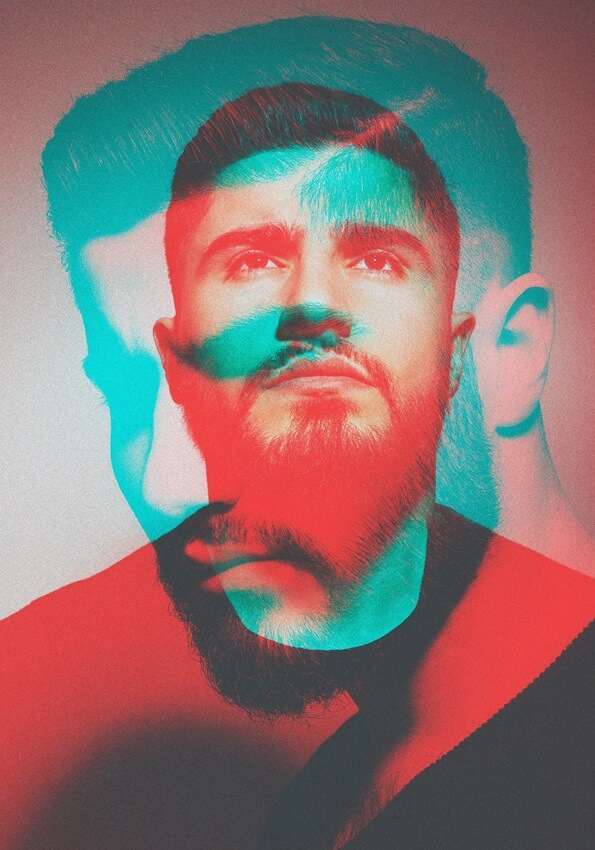
- Self expression self-portrait photography
If you need to present your mood, view, and identity, you can do it freely through a self-portrait. Show your personality, emotions, and individuality through colors, textures, or light. Use any background that highlights your inner world. The most important thing is to find your own style in which you feel comfortable and are not scared of judgment. Are you in touch with nature? Use various backgrounds and capture yourself in your favorite season. Maybe you are a dancer and want to express your passion in a ballet hall. Document yourself enjoying your hobbies. Use facial expressions, body language, and poses to express your emotions.

- Abstract self portrait photography
Abstract self-portraits can be the most unique and arty. This type of photo involves emotions, unique concepts, unusual lighting, and editing techniques. Usually, abstract portraits have dramatic effects, so play with light and be open to black-and-white images. Use mirrors and reflections to create visually attractive effects. Movements together with a slow shutter speed will give you the best abstract results. Include nature elements or random objects in your house to create a story. Unique clothes, accessories, and face masks can add to abstract self-portrait photography.
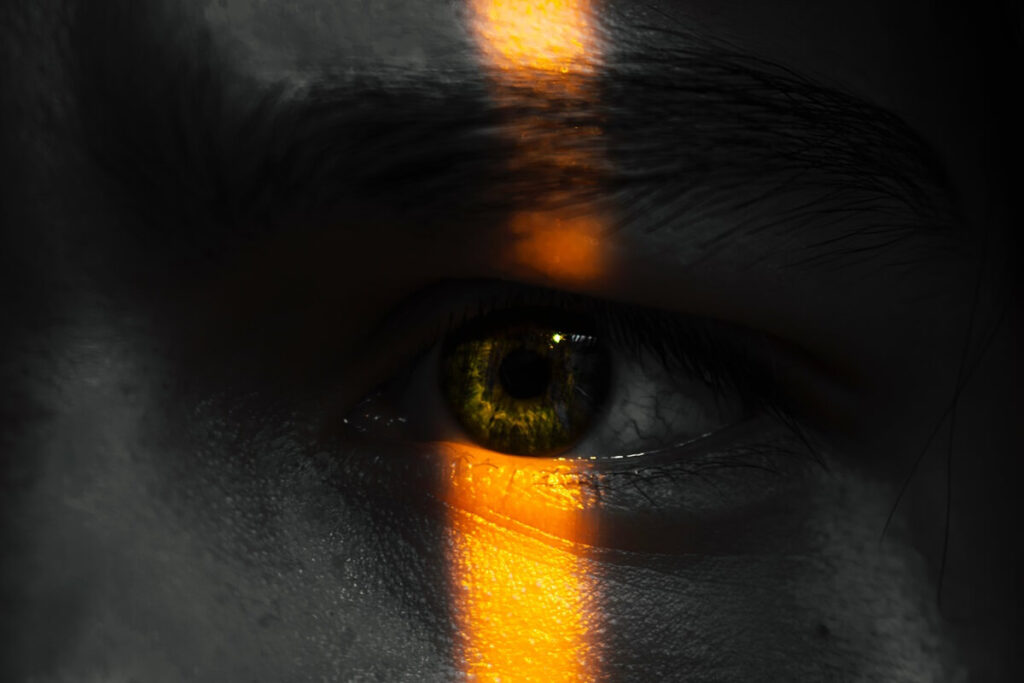
- Faceless self portrait photography
You can still tell the story or present a certain mood without showing your face. There are a huge number of objects you can use to cover your face and create a mysterious effect. Flowers, mirrors, or books are probably the most common objects in faceless self-portrait photography. However, you can play with your hair, wrap your head and face with threads, or pour paint on your face and hair. Faceless self-portrait photography also means you can have your back or side turned to the camera.
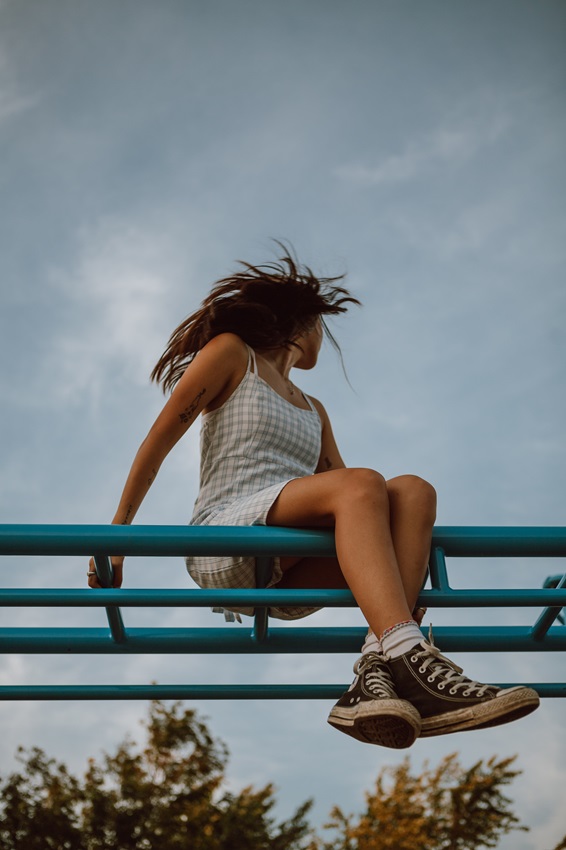
- Figurative self portrait photography
Figurative self-portraits are all about lines, shapes, and sizes. However, it does not mean that you have to pose nude. Figurative self-portraits include close-up faces, where viewers can clearly see the shape of eyes, nose, and jawline. If you choose to self-portrait your body, make photos blur by using slow shutter speed. To achieve such an effect, move your body and hair in front of a camera. The viewers will be able to see your curves, but not so obvious. Silhouettes also work well if you do not want to show your face. Use a large aperture and stand in front of a lighter background.
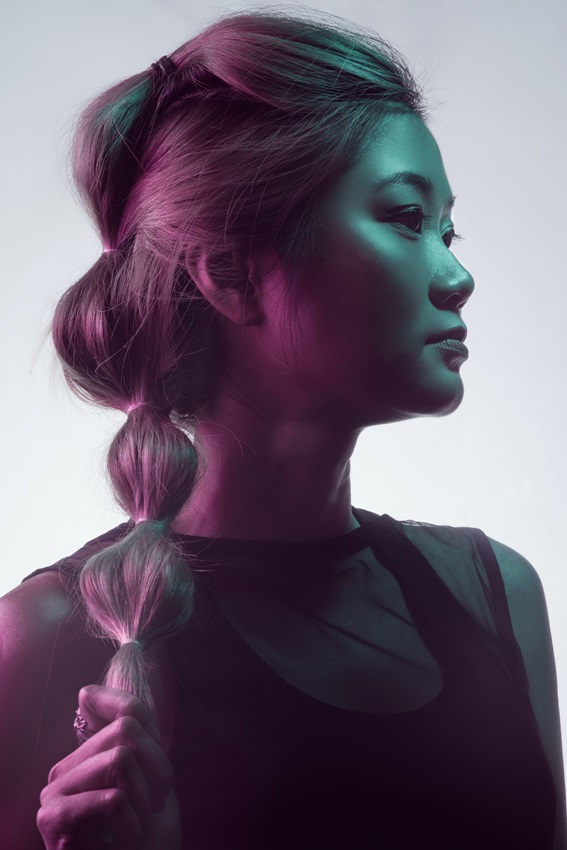
- Self portrait indoor photography
For many photographers, indoor self-portraits are an intimate process that does not force them to rush to achieve the desired result. If it is your apartment where you want to self-portrait yourself, choose lighting first. It can be natural daylight coming through the window or warm lighting from a torch, candle, or Christmas lighting. The good thing about indoor photography is that you can create any background. Photograph yourself while doing something you enjoy, whether playing with your pet, cooking, or reading.
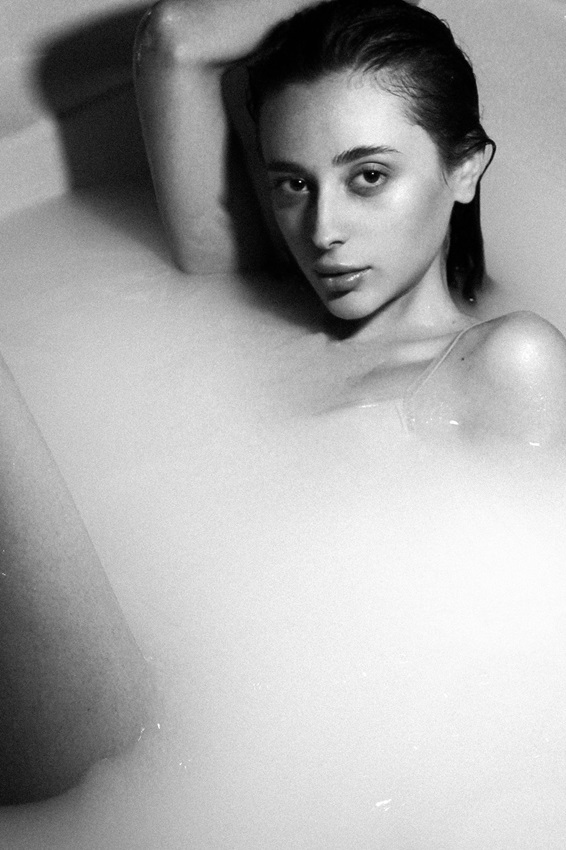
- Self portrait photography ideas at home with a phone
If you do not have a camera, your smartphone can also work great. Use a tripod, set your phone camera for portrait mode, get the time right, and wait for results. A creative at home self-portrait may include a plant that covers half of your face, a cooking process, taking a bath with lots of foam or petals, looking at yourself in the mirror, or posing in window blind shadows.

- Self portrait outdoor photography outdoor
The key to successful self-portrait outdoor photography outdoors is a wide lens. For example, you can take 35L since it allows you to include so much of the environment and make you look tiny (if you fancy such an idea). Look for less crowded locations, or if you like, you can focus on yourself in a moving crowd. If you use a remote, then set it to its max and then set your camera to a 10-second timer. Get close enough so your remote activates the shutter. Now, take 10 seconds to move farther away and strike a pose.

- Self portrait black and white photography
Black and white photography can come out as strict and serious or ghostly. It depends on what you wear, your facial expression, and your background. However, all black-and-white self-portraits look attractive and stylish. If you want to create a memorable photo, use black and white, as it will always look nostalgic. Since black and white photos usually come out nicely anyway, you do not need to overthink the pose, background, and accessories. You can photograph yourself close up and edit it to be pleased with the result.
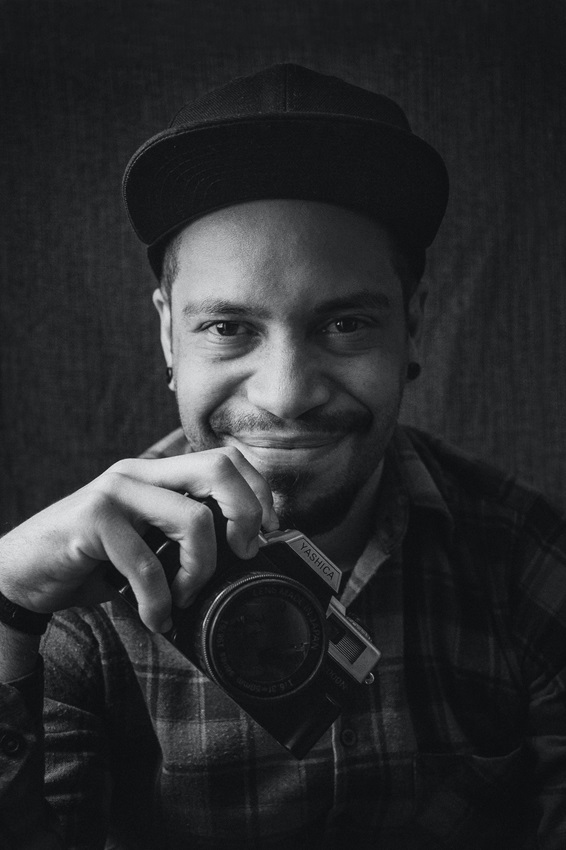
- Mirror self portrait photography
Taking photos of your reflection in the mirror can be the most exciting experience. We all have moments when we want to grab a camera and capture the way we look. Taking mirror self-portrait photography will allow you to get the best results faster as you can check your facial expression or how your hair falls in the mirror. When using a mirror, you can play with reflections and symmetry. Try to use multiple mirrors to create intricate reflections. This will make the viewers want to explore your mirror self-portrait photography longer.

- Fashion self portrait photography
Do not be scared to express your ideas and vision. It is all about styling. Wearing a suit and posing bare feet can be quite stylish. Smoky eyes and hair down will add a sexy touch to your fashion self-portrait. With this type of photography, you can express your style or present some fashion concepts. This is your opportunity to feel like a model and deliver a particular story. Using accessories like hats, scarves, sunglasses, or jewelry will make the photos look more appealing. Check some popular model poses to make your self-portrait look professional.

- Simple self portrait photography
If you think that great self-portraits require an expensive camera, setting, and lots of different outfits and accessories, you are wrong. Sometimes, something really simple can make others stare at photos for hours. Let’s imagine that you want to take photos of yourself at home; you do not have any props, and the walls are plain. All that is required is your posing, good light, and editing skills. Stand near the wall (actually, a plain wall is perfect for a clear background), use a minimalist wardrobe, take a chair, and try posing with it. You can lean on it, sit on it, or put one leg on it. Put your camera on a timer and catch yourself talking or laughing. It is all about trying and choosing what seems nice to you.
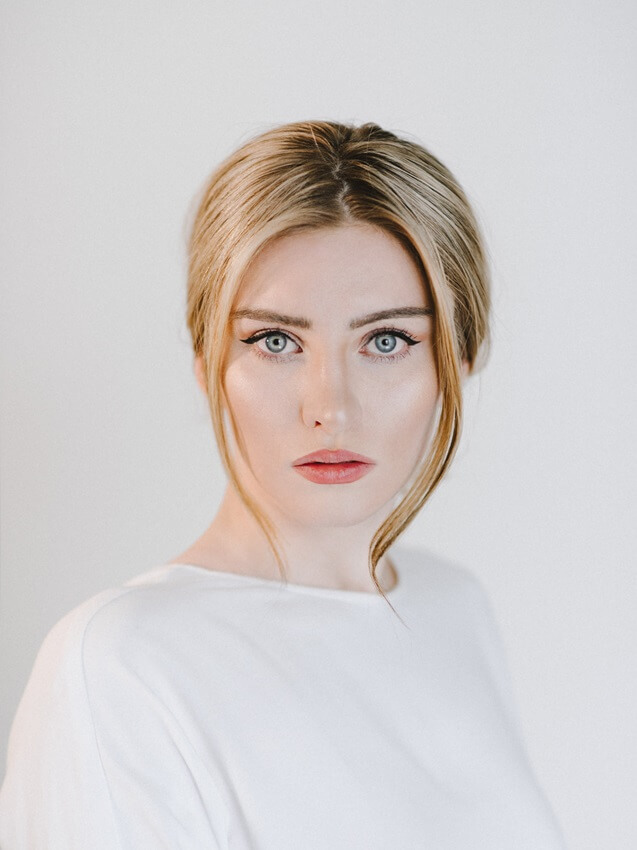
- Self portrait photography around trees
Nature self-portraits are pretty versatile. They show your relationship with nature, the beauty of nature, and can convey temperature and atmosphere. Self-portrait photography around trees provides a natural backdrop. Pick a lush green location or a forest covered in autumn leaves. Position yourself in sunlight filtering through the leaves as it creates playful shadows. Use branches to frame your self-portrait and focus on leaves rather than yourself to create a more environmental aspect.

- Multiple self portrait photography
Capture several versions of yourself in a single frame. You can explore concepts of your identity, emotions or show different facial expressions within a single composition. To achieve an engaging result, think of the props you want to use and interact with them differently across the multiple self-portraits. You can also change clothes and colors on each photo. The time-lapse effect is ideal for multiple self-portrait photography. Catch yourself in different stages of a movement to create a sense of motion and energy.

- Surreal self portrait photography
This type of photography is ideal for those with a good imagination. You can deliver fantasy-like photos. However, in most cases, surreal self-portraits are often strongly edited. Create an impression of you floating by using specific props and clothing. Blend your body or head seamlessly into environments like nature or architecture. Create a miniature version of yourself by manipulating scale and perspective. Then, you can place the self-portrait of yourself on a leaf, flower, or next to an insect. To achieve good results, you should explore some editing techniques beforehand. For example, Photoshop allows you to distort your self-portraits and create illusions.

- Fisheye self portrait photography
Another idea for self-portrait photography is the fisheye effect. It has a wide-angle view and results in a distinctive barrel distortion. Play with different angles, capture your surroundings, and get close to the lens to add a surreal element to your images.
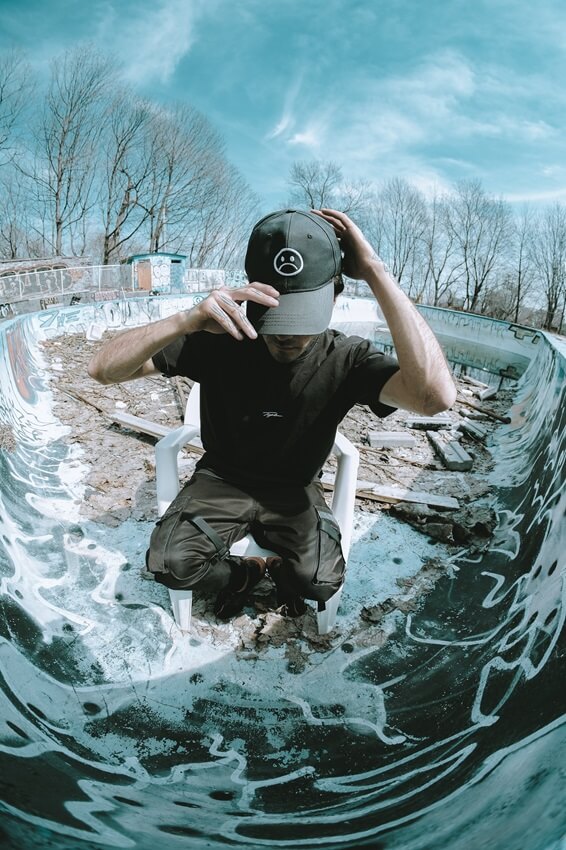
- Street self portrait photography
If you shoot in a city, use the light of street lamps. Self-portraits taken in bright sun or rain will come out well if you find a comfortable surroundings. Choose early morning if you want to self-portrait yourself in a quiet environment. If you want to capture yourself in the crowd, shoot during the evening hours. The benefits of shooting in the street are natural light and dynamic background. Include storefront windows or mirrors for creative street self-portraits. If you can find street art, use it for your background. This will help you to achieve artistic effect.
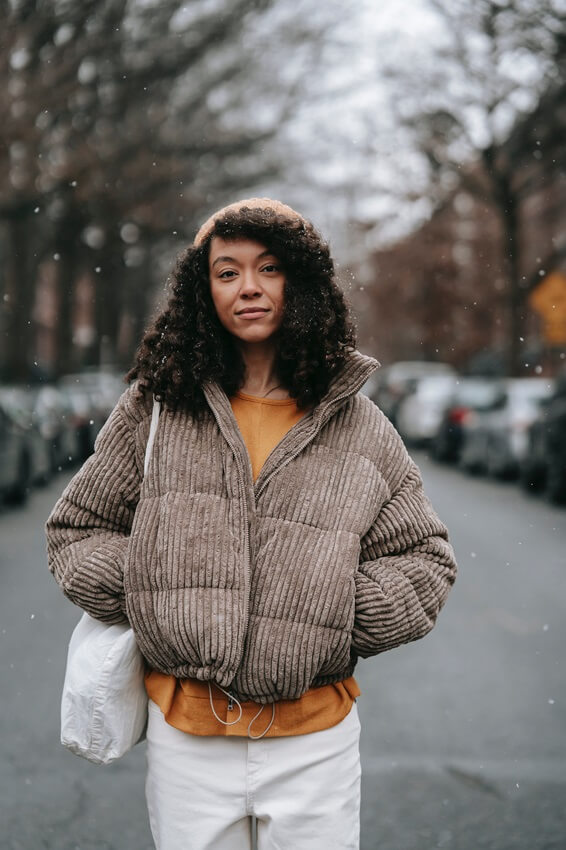
- Dark self portrait photography
Dark self-portrait photography usually creates moody, mysterious, and atmospheric images, and if you feel like this is what you want to present in your self-portrait, here are a few ideas for you. The emphasis on dark self-portrait photography should be on shadows and darker tones. Create contrasting effects or use backlighting to create silhouettes. Your body language can tell a lot in such a type of photography. You can sit relaxed with a smile on your face by the candle with a cup of hot drink or use cold while light, express fear, and have a tense pose. Try long exposures in low light, as it will give you a dreamlike effect. When editing your dark self-portrait photography, play with adjusting contrast, shadows, and highlights to achieve the desired result.
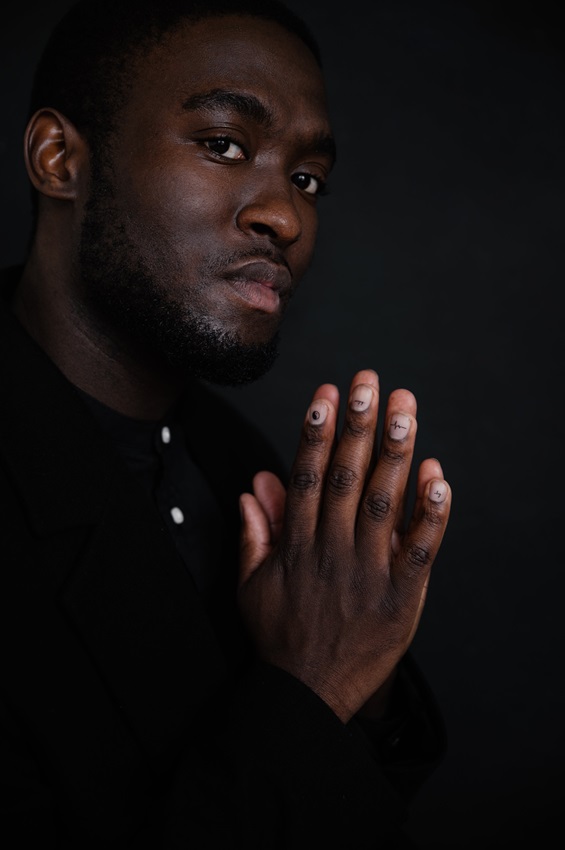
Equipment for self portrait photography and settings
After reading through all the ideas, you may think you need an expensive camera and a professional photo studio. But numerous self-portraits prove that all that is required is creativity and time. Of course, you still need some equipment to make the process easier, but it will not cost you much. Please check the essential list of equipment for self-portrait photography.
- Camera
Use a DSLR, mirrorless camera, or even a smartphone with a decent camera. For good shots, you basically need 3 camera settings, which are shutter speed, ISO, and aperture. A low shutter speed brightens the photo and adds motion blur. A high shutter speed is best for daylight and capturing moving objects without blurring. Low ISO results in darker pictures and makes them less blurry, while high ISO brightens and makes pictures more “crystal”. Low aperture also brightens the picture but can focus on a smaller area. A high aperture allows you to focus on more details and make the picture darker.
- Tripod
Whether you take self portraits indoors or outdoors, you need a sturdy tripod. It will help you to take multiple exposures, avoid blurring, and save time in achieving the result you desire. If you are not tight with your budget, get a tripod that allows you to adjust height and angles.
- Remote Shutter Release or Timer
These features will give you enough time to get some distance and pose before taking a shot. A typical timer settings are a 2, 5, or 10-second delay. The last setting will undoubtedly give you enough time to hide your remote and strike a pose. To make the process smoother, use the interval timer as it allows taking multiple pictures in a row.
- Lens
The type of a lens depends on the result you are aiming to achieve. Choose a 50mm or 35mm lens if you are a beginner. However, to achieve a more professional effect, go for a wide-angle or portrait lens. Using lens filters can make your self-portraits more interesting. For example, polarizers reduce reflections, ND filters enable longer exposures, and color filters add various tones to photos.
- Lighting equipment
As we have mentioned in the article, lighting plays a huge role. Your self-portrait photos will look more professional if you use an external flash or speedlight if shooting indoor or low-light locations. Softbox or umbrella enables a softer and more flattering effect.
- Backdrop
If you need a plain background, consider getting a backdrop. You can use a white paper backdrop or fabric.
No matter how good your equipment is, editing software will polish your photos and give them a more “expensive” look. Check out Adobe Lightroom or Photoshop to edit your images. Both programs require skills and practice, but once you learn how adjustments of exposure, color, and retouching work, you will enjoy enchanting your self-portraits.
Best Books for self portrait photography
If you want to learn how to take pictures or improve your skills, here are 3 famous books that can assist you in this process.
This is not just a book but a comprehensive guide to taking breathtaking self-portraits. It will surprise you with multiple tips and techniques to start practicing with your camera at home.
The author discusses the importance of light, advises on camera settings, and provides practical tips on working with light. Whether you are a beginner or a professional, this book will give you insight into better photography.
Here is one more book that will help you learn to take shots of others and others. The author talks about posing, different body shapes and sizes, and gives tips on how to demonstrate the beauty of people through photography.
Brim yourself with insights from famous photographers from around the world and learn to take mesmerizing photos of yourself and others.
Best Courses for self portrait photography
The top three courses that we would highly recommend for both beginners and experienced photographers are as follows:
- Best Self-Portraits Photography Mastery to Express Yourself at https://www.udemy.com/course/intro-to-self-love-portrait/
- Online Self Portraits Classes at https://www.skillshare.com/browse/self-portraits
- Self-Portraiture and Street Style Photoshoot at https://alison.com/course/self-portraiture-and-street-style-photoshoot
Each of these courses is stuffed with creativity and inspiring self-portrait ideas that you will be able to incorporate into your own shooting experience. You will not only learn photography techniques but also get editing techniques for stunning results.
FAQ:
This type of photography allows experimentation with lighting, angles, and different camera lenses. When photographers can master their skills using their portraits, they are likely to understand the requirements and preferences of their clients.
No, a self-portrait can only be taken by you. This is an incredible experience as you can be an inspiration, model, photographer, and editor simultaneously.


